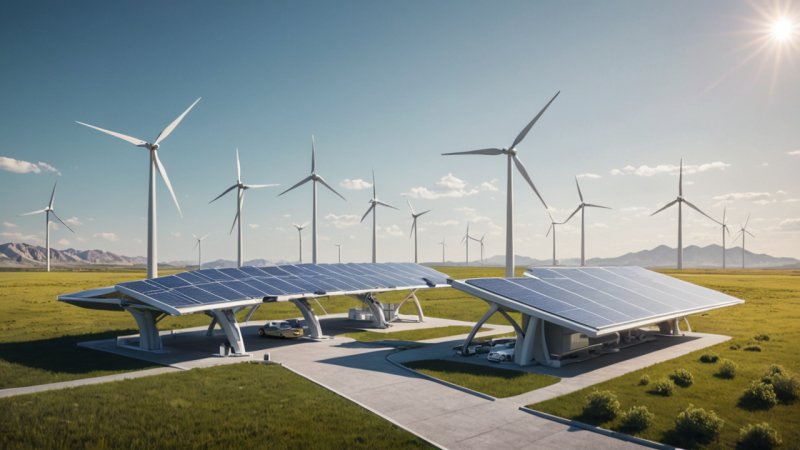The quest for sustainable energy sources has never been more critical as the world grapples with climate change, resource depletion, and the need for economic stability. Renewable energy, derived from natural processes that are replenished at a faster rate than they are consumed, is at the forefront of this transition. Research in this field is not only advancing technologies but also redefining how we think about energy consumption and environmental stewardship. In this article, we will explore the latest breakthroughs in renewable energy research, examine the technologies that are driving this change, and consider the implications for our future.
The Importance of Renewable Energy
Renewable energy plays a significant role in reducing greenhouse gas emissions, diversifying energy supply, and enhancing energy security. According to the International Energy Agency (IEA), renewables are expected to account for nearly 30% of global electricity generation by 2024. As fossil fuel reserves dwindle and the impacts of climate change become increasingly apparent, the shift towards renewable sources such as solar, wind, hydroelectric, and biomass is essential.
Recent Breakthroughs in Renewable Energy Research
Solar Energy Innovations
Solar energy has seen remarkable advancements in efficiency and cost-effectiveness. Researchers are developing new materials, such as perovskite solar cells, which promise higher efficiency rates at a lower cost than traditional silicon cells. Perovskite solar cells can be manufactured using less energy, making them a more sustainable option. Additionally, innovations in solar panel design, such as bifacial panels that capture sunlight from both sides, are increasing energy output.
Wind Energy Developments
Wind energy is another area experiencing significant growth. The development of larger and more efficient wind turbines is increasing energy capture. Floating wind farms, which can be placed in deeper waters where winds are stronger and more consistent, are also gaining traction. Research into turbine materials and designs is focused on reducing costs and improving durability, which will enhance the viability of wind energy as a primary power source.
Energy Storage Solutions
One of the main challenges with renewable energy is its intermittency; solar and wind energy generation fluctuates based on weather conditions. Research into energy storage solutions, such as advanced battery technologies, is crucial for addressing this issue. Lithium-ion batteries are currently the most common storage solution, but researchers are exploring alternatives like solid-state batteries and flow batteries, which offer greater energy density and longer life cycles.
Hydrogen Fuel Research
Hydrogen is emerging as a promising clean energy carrier. Research is focused on producing hydrogen through renewable sources, such as electrolysis powered by solar or wind energy. This green hydrogen can be used in fuel cells to generate electricity or as a direct fuel source for vehicles. The development of efficient and cost-effective hydrogen production, storage, and distribution technologies is essential for its widespread adoption.
The Role of Policy and Investment
While research and technological advancements are crucial, supportive policies and investments are equally important for the growth of renewable energy. Governments worldwide are implementing incentives for renewable energy projects, such as tax credits, subsidies, and renewable portfolio standards. These policies encourage private investment and innovation in the sector. Furthermore, international agreements like the Paris Accord are pushing nations to commit to reducing carbon emissions, thereby accelerating the transition to renewable energy.
Challenges and Future Directions
Despite the progress made, several challenges remain in the renewable energy sector. The initial capital costs for renewable energy infrastructure can be high, and the integration of renewable sources into existing energy grids is complex. Moreover, public perception and acceptance of new technologies can hinder progress. Future research must address these challenges, focusing on cost reduction, grid integration, and public engagement.
Conclusion
The future of renewable energy is bright, driven by ongoing research and innovation. As we continue to develop and implement new technologies, it is vital to recognize the role of policy and investment in facilitating this transition. By harnessing the power of renewable energy, we can create a sustainable future that benefits both the planet and its inhabitants.






